
Extreme Touring
Touring the Nitro Circus across Europe in 18 trucks and six buses.
Text and Images:/ Paul Collison
Well now I’ve done it. I’ve run away and joined the circus – although it’s only for three weeks, so I can’t say I’m a true carny.
While it is not a traditional circus, Nitro Circus Live is very similar in many ways. Built around freestyle motocross star Travis Pastrana, the show is a collection of daring stunts and tricks augmented with a thumping PA, pyro and spectacular lighting (okay, I might be biased).
Touring Europe is different to other parts of the world. The shorter distances between shows mean that flights can often take longer than a trip by road. The venues are bigger, as are the audiences. And the Nitro Circus Live European tour does not follow your ordinary rock and roll touring schedule. For starters, rock doesn’t wake up at 6am (yes, there is a 6am apparently), and we’ve replaced the guitars, drums and keyboards with bikes, shopping trolleys and a Barbie car. There is staging but it’s in the form of a 14m high takeoff ramp called the Giganta. So this is no ordinary tour, but it’s a tour nonetheless.
When Nitro Circus tours Australia in April, there will be leisurely two-day bump-ins. For Europe, not only do we have to get the show up in a single day, we also have to do a show and pull it all out again. It is no easy task for Brendan Maher, the production manager, to assemble a team to do just that.

WAKE UP CALL
The day starts at 6am. Invariably this means a hotel lobby call at 5:30am or dragging yourself from your warm bunk on the bus. Dave “Dash” Rowe, the touring rigger, is first up and on the floor to herd his local riggers together and mark out his 50-plus rigging points. As in Australia, the touring crews get to know the locals as each tour passes through, so the morning usually starts with a few catch up stories from previous tours. Once the rock god stories are out of the way, the first of the 18 trucks are unloaded.
The scaffies are also first up to begin building the Giganta ramp. Made entirely from standard scaffold, this monstrosity is one of the centrepieces of the show and takes almost eight hours to completely build and dress. The other priority is to get all the lighting, video and audio systems up in the air so the track team can build the ramps and lay the rubber-matted floor for the motocross bikes.
Access at each venue is always different: some have end-on access, others have side vomitory access. Every day is carefully choreographed to make maximum use of time. Although the lighting trusses are made up of three straight runs, they run out at 90m each so you can imagine what it’s like when they cover up access ways for extended periods. Spread across these trusses are 48 x VL3500 washes, 24 x Clay Paky 150W Alpha Beams, 27 x Martin Atomic Strobes, and 4 x Martin MacIII Profiles. There are essentially two tracks to light, the Giganta Ramp and lander, and the freestyle motocross “kickers” and lander. The VL3500s do a stellar job of lighting the track while the Alpha Beams stomp over everything in between tricks, ballyhooing all over the place.
The audio system varies between a central cluster and an end-on format depending on access and time restrictions rather than sonic suitability, much to the dismay of audio director George Gorga. This might seem strange but as is often pointed out, we can do the show without lights and we can do it without audio, but without the ramps and track there is no show. Compromises are always made in the best interests of the show and the safety of the athletes, which while frustrating at times, makes perfect sense. George triggers all the music tracks from two Instant Replay machines while keeping up to five hosts at a time open on the floor.
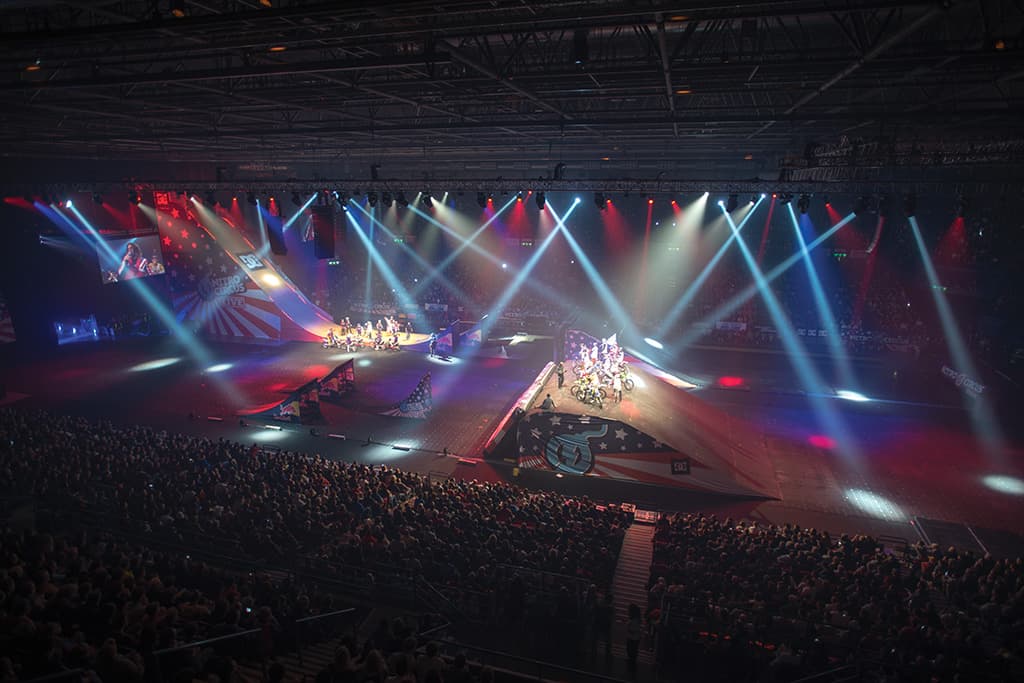
ALL ABOUT THE CATERING
Touring caterers might seem like a luxury but keeping your crew well nourished is important, particularly when you’re on such tight schedules. Each day the guys and girls from Snakatak, based in the UK, are among the first in and last out. On a normal rock tour they would provide a light breakfast with table service for lunch and dinner. On this tour the meal times are stretched out for most of the day, and served buffet style. Menus are planned well in advance and, like the touring tech crew who know their local staff, the caterers order in fresh food from trusted local suppliers. It also isn’t just about the food. Each day the caterers dress the dining area with colourful tablecloths and other trimmings to brighten the dreary backstage areas. There is even a Christmas theme for the last show complete with tinsel, trees and crackers. The effort is impressive and welcome.
After a long bump in there is hopefully about half an hour of “dark and noisy” time. This gives lighting half a chance to touch up focus positions, and gives George an opportunity to quickly time align and tune the PA. This is followed by some time for the athletes to warm up and hone their skills. As you can imagine there is a fairly high attrition rate on a show such as this. Over the course of the tour many performers are sent home with injuries and others are flown in to replace them, so someone new joins the circus each day.
The show runs in two hour-long halves – the audience can’t complain about value for money. Seconds after the last pyro bursts, with the smell of two stroke and burning rubber lingering heavily on the nose, a majestic flow of coloured vests enters the arena to begin the tear down. Amazingly, something that takes so long to set-up is torn down in less than three hours, with another hour at the end to load the scaffold. It certainly is an impressive spectacle. As the crews finish for the day they either dribble back to the hotel if we are staying at one, or to one of the four touring buses.
Bus nights require a shower at the venue and most search out the VIP dressing rooms to find the better showers. Fresh and ready to relax, you wander back to your bus which the caterers have loaded up with beer, wine and fresh sandwiches during the show and, given the tough schedule, it isn’t long before you saunter back to your bunk and make the momentum of the bus your friend.
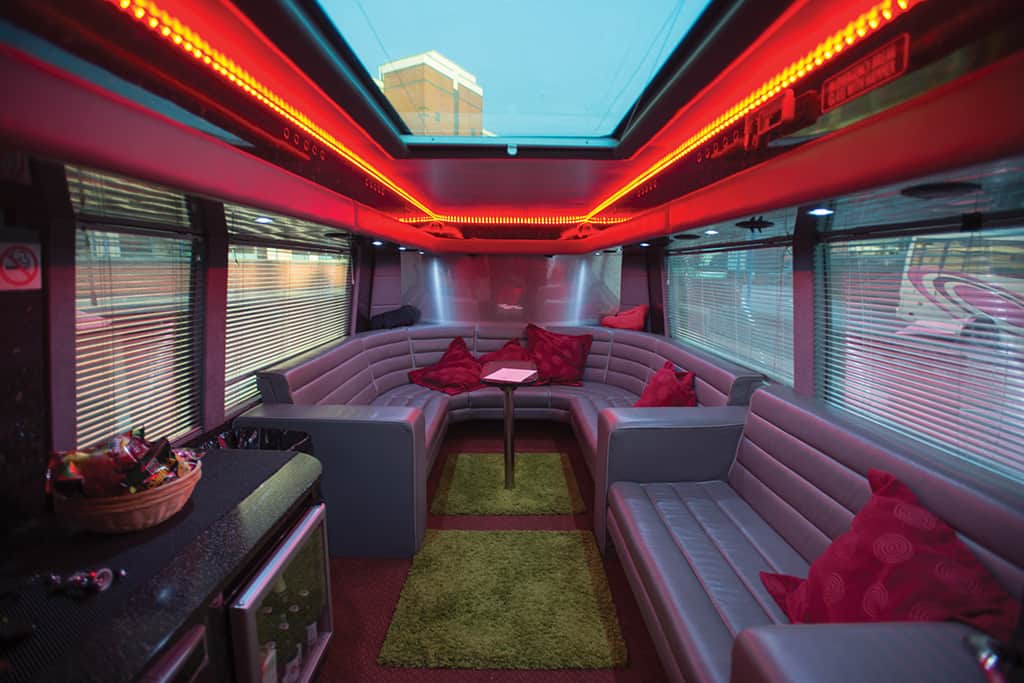
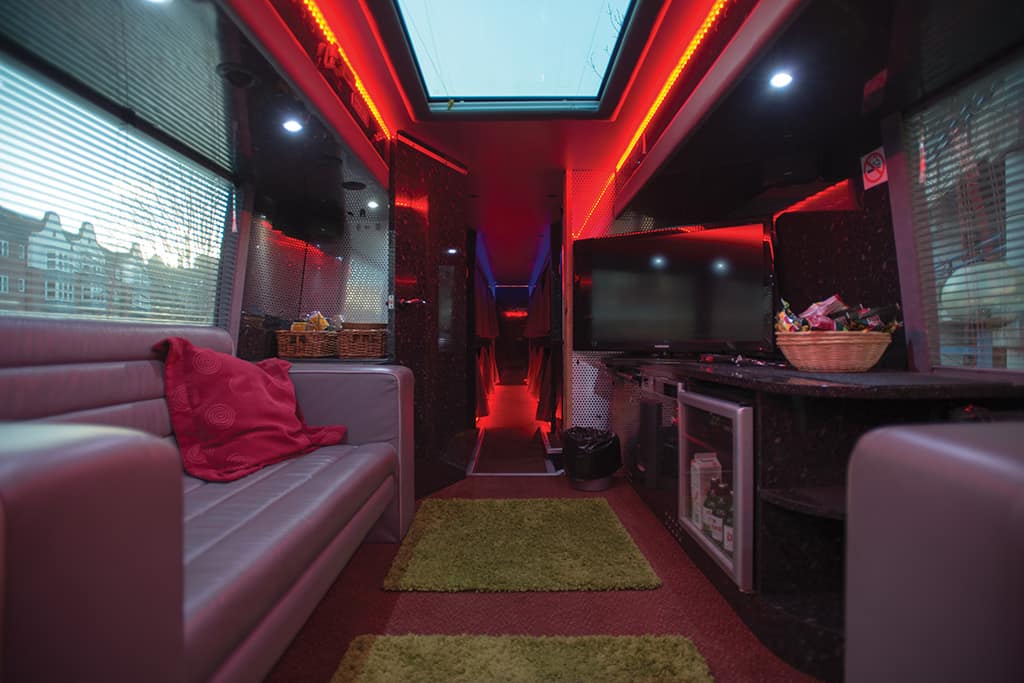
P.O.O. PROTOCOL
Our driver, Jim, spends almost 300 days a year on the road. The bus is his home. As an ex-military guy, he keeps it pristine with absolute precision. He vacuums and wipes down the interior every day, and changes the sheets every few days. There are some pretty simple and obvious rules that passengers need to adhere to. Firstly in the bathroom: no number twos. This is due to the type of plumbing in the buses. If you need to, you can wander down to Jim, offer to make him a cup of tea and ask if he can stop at the next roadhouse, and there are plenty in Europe. Secondly, keep the bulk of your luggage in the luggage compartment down below and only take what you need on to the bus. Space is at a premium and excess bags can be frustrating to have around. It’s also important to keep things neat: wash your dishes, plates and mugs when you’re finished. Most people understand this makes for a pleasant trip.
It’s easy to see why these buses cost around $600,000 each. Configurations change but on this tour, downstairs we have a toilet and kitchenette complete with espresso machine. There is a table for four and lounge seating for a further four. There is a PlayStation, DVD player and Bose audio system. Jim also drives from this level and has a bunk set-up that folds down behind him.
Upstairs is fairly spacious. At the very front are two seats that give you a great 180° view of the countryside as it passes by. Behind this area are six bunks, two high on each side. There is often animated discussion as to which is better, the top or the bottom. I prefer the top, if only to avoid smelly feet walking past each morning. Everyone sleeps feet to the front of the bus – although there are some people on the tour who would sustain less damage if their heads hit the wall in an emergency brake, we all follow this unspoken rule. Behind the bunk area are storage racks for smaller luggage – on some buses this is configured with two more bunks. This is also where the stairwell is located.
At the rear of the upper deck is the largest lounge area. Separated by a door so some can sleep while others relax, this space is well stocked with activities and refreshments for long journeys. There is a 46cm flat screen TV complete with hundreds of movies to choose from, and a second PlayStation and Bose sound system. There is also a rounded lounge that can seat six to seven people comfortably around a small table. A big moon roof allows for natural light during the day, and horizontal blinds on the side windows provide privacy if you don’t like truck drivers looking in at you at night. Soft lighting states with blue and red LED trimming give the bus a modern and comfortable feel. It’s a great way to tour.
A tour like this is certainly different to what we are used to in Australia. The language barrier is less of a problem than you might think, and most local crews follow instructions diligently. There is little time to see the sights as you navigate your way around the continent but the snippets you do see show diverse cultures that can change in just a few hundred kilometres. I’d highly recommend running away to join the circus… But only for a few weeks.










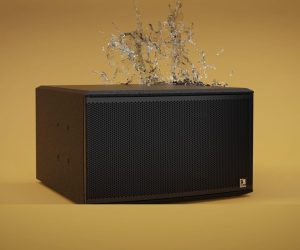
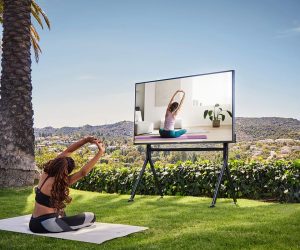
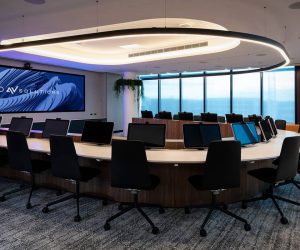


RESPONSES